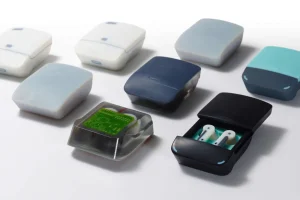
Let’s be honest. When you picture a tech startup, you probably imagine a team of hoodie-wearing coders in a sleek, minimalist office, fueled by cold brew and venture capital. That’s the software dream, right? But what if your dream is to build something you can actually hold? Something that whirs, clicks, or lights up? Bootstrapping a hardware technology startup is a different beast entirely. It’s a marathon, not a sprint, run on a shoestring budget and sheer willpower.
Here’s the deal: it’s hard. Incredibly hard. But the reward—retaining control, building a truly sustainable business from the ground up, and seeing a physical product you conceived out in the world—is uniquely satisfying. This is your guide to navigating that path.
Why Even Bother Bootstrapping Hardware?
Sure, taking millions in VC funding sounds glamorous. But it comes with strings—tight ropes, really. You lose equity, sure, but more importantly, you often lose control. Your timeline, your product vision, even your company culture can become dictated by investor expectations.
Bootstrapping, on the other hand, forces a discipline that venture-backed companies can sometimes ignore. You become obsessed with profitability from day one. You learn to be ruthlessly resourceful. Every single decision, from your component supplier to your packaging, is made with an eye on the bottom line. This isn’t a constraint; it’s a superpower. It builds a fundamentally stronger business, one that doesn’t rely on the next funding round to stay alive.
The Core Challenges (And How to Tackle Them)
You can’t ignore the elephant in the room. Hardware is capital-intensive. The costs are real and they hit early.
The Cash Flow Conundrum
This is the big one. You have to pay manufacturers upfront, often long before you see a single cent from a customer. This creates a cash flow chasm that has swallowed many a promising startup.
Strategy: Get creative with your financing. Pre-sales and crowdfunding campaigns aren’t just for marketing; they’re vital validation and cash-generation tools. They prove there’s a market before you commit to a massive production run. Consider a direct-to-consumer (D2C) model to cut out the middleman and improve margins, even if the initial volume is lower.
Prototyping on a Pauper’s Budget
That first prototype. It’s the moment your idea becomes real. But professional prototyping can cost a fortune.
Strategy: Embrace the “minimum viable prototype” mindset. Don’t build the perfect, final-product version. Build the absolute simplest version that tests your core hypothesis. Use off-the-shelf components like Arduino or Raspberry Pi. Leverage affordable 3D printing and local maker spaces. The goal is to learn, not to impress.
The Manufacturing Maze
Finding a reliable manufacturer, especially overseas, is daunting. Communication barriers, minimum order quantities (MOQs), and quality control from thousands of miles away… it’s a lot.
Strategy: Start local if you can. Look for small-batch manufacturers or assembly houses in your own country. The per-unit cost will be higher, but you’ll avoid the massive MOQs and gain invaluable control. Build relationships slowly. Order a small batch, test everything meticulously, and then scale the relationship. It’s about trust, not just transaction.
A Bootstrapper’s Strategic Playbook
Okay, so you know the challenges. How do you actually structure your company to survive and thrive? It’s about playing a different game.
Niche Down Until It Hurts
You cannot be everything to everyone. The key to bootstrapping hardware technology startups is to find a specific, underserved niche. Instead of “smart home devices,” think “ultra-durable, waterproof sensors for commercial aquaponics systems.” A narrow focus means less competition, a clearer marketing message, and a community you can deeply understand and serve.
Embrace the “Poco a Poco” Philosophy
That’s Spanish for “little by little.” Your first product doesn’t need 20 features. It needs one or two amazing features executed flawlessly. Think of the first iPod. It played music. Really, really well. That was it. You can add features in later versions, funded by the revenue from the first.
Build in Public and Build a Community
Your future customers are your biggest asset. Share your journey. Post behind-the-scenes photos of failed prototypes on social media. Write a blog about the challenges you’re facing. This transparency builds an incredible amount of trust and creates a tribe of early adopters who will champion your product. They provide feedback, word-of-mouth marketing, and, through pre-orders, crucial early capital.
Essential Financial Levers to Pull
Let’s get tactical. Your bank account is your lifeline. Here are some non-negotiable financial controls.
| Concept | What It Means | Bootstrapper’s Action |
| Gross Margin | The profit after cost of goods sold (COGS). | Negotiate every component. Design for manufacturability to lower assembly costs. This is your primary focus. |
| Burn Rate | How fast you’re spending cash. | Keep it agonizingly low. Remote team, used equipment, free software tools until you can’t live without the paid version. |
| Inventory Turnover | How quickly you sell through stock. | Avoid overproduction. Use pre-orders to gauge demand. Stagnant inventory is dead cash. |
Honestly, you need to become a master of your unit economics. Know exactly what it costs to make and ship one unit, and what you can sell it for. This simple equation is the heartbeat of your bootstrapped venture.
The Mindset: Your Most Important Tool
All the strategy in the world means nothing without the right mindset. This path is emotional.
You must be stubbornly optimistic but brutally realistic. You will face setbacks—a failed component, a shipping delay, a negative review. It’s part of the process. The goal isn’t to avoid problems; it’s to build a company resilient enough to solve them.
Celebrate the tiny wins. The first working prototype. The first sale to a stranger. The first five-star review. These small moments fuel the long, arduous journey.
In the end, bootstrapping a hardware startup is about more than just building a product. It’s about building character. It’s a testament to the idea that with enough grit, creativity, and focus, you can still build something tangible and meaningful from scratch. You can still bring a little bit of the future into the present, one carefully soldered connection at a time.








